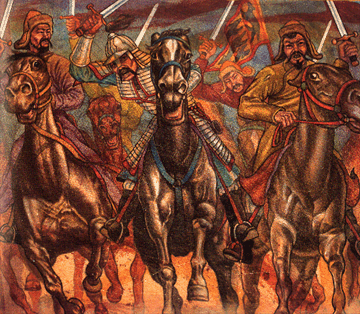The findings revive a legend about the horses 'blood sweating' in Ancient China, the report quoted Hinhua.
Wudi story about the "Silk Road" and the horse "sweated blood" has become a legend in Chinese culture and many people are drawn to the legendary horse that has been long lost.
Yang Wuzhan, a arkelog who took part in the dig the tomb of Emperor Wudi, says that at the time of grave digging two holes in September 2009, their team gets 40-telulang horse bones.
From the laboratory results of the fossil, confirmed it turns out they are all adult male horse. "Scientists will soon conduct DNA tests hope to determine the genes of the horse," said Wuzhan as quoted by People's Daily.

The findings will revive the centuries Chinese legend about a mysterious blood sweating horses from Central Asia.
"The legend of the horse is long gone, since Emperor Wudi offers hefty rewards for anyone who can find a mysterious race horse 'sweating blood' that was mentioned was browsing the Central Asia, but rarely seen in China," explained Wuzhan.
Today, the horse was identified as the Akhal-Teke, one of the descendants of horses in the world's oldest and most unique. In Chinese records, Emperor Wudi wrote that the horse breed. In a poem he wrote about the Akhal-Teke, a "horse heaven."
Horses are known for their speed and sweat resistance of fluids such as blood gallops. It is also believed to be the horse ridden by Genghis Khan (1167-1227).
Emperor Wudi is known for having opened the Silk Road, an ancient trade route linking Asia and Europe. Development of the emperor's tomb began in 139 BC, a year after he was enthroned at the age of 16 years. And it takes time for 53 years to build it.
The tomb has more than 400 holes of sacrifice, the tomb of Qin Shi Huang more than, "first emperor" of China.
Source: dapunta.com


No comments:
Post a Comment